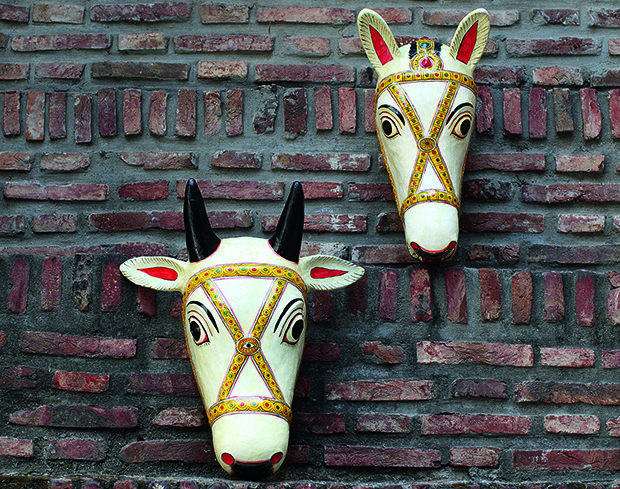
5 things that might help you believe
A glimpse of the rich historical and contemporary design of India where belief plays an important daily role
Design is an implicit part of daily life in India. As the contemporary designer Divya Thakur says: It's "an ingenious, spiritual, complex continuum" and one that has eliminated the redundant and assimilated the useful since time immemorial.
Indeed, in India the artisan has traditionally been considered as a medium for the divine. The Shilpa Shastras - the ancient Hindu science of 64 arts and crafts - are a series of ancient texts that expound exacting rules on how iconography, carpentry, textiles, jewellery and even painting should be produced. The purpose, the reasoning behind and the proportions of a craft object were considered predestined and perfection was a divine attainment.
Our new book, Sar: The Essence of Indian Design looks at Indian design from a number of engaging angles. Today we're looking at five of the objects in it that are associated with Believing or Vishwas.
(Above) Papier mâché masks Mask-maker Dhanalakota Nageshwar created these papier mâché masks in 2010 as an exploration of the long tradition of mask-making in India, where masks are used in storytelling or as a means of warding off evil spirits. Nageshwar’s masks do not have a ritual purpose, but are objects of contemplation on the medium of papier mâché. The process of papier mâché is practised by many artisans in India who work with a basic mould comprised of mud, sawdust and cow dung, which is then covered in paper or sometimes cotton rags. The image of the face is painted using watercolours made from vegetable dyes. Common motifs are animals in folklore that are related to Hindu texts and mythology and also those of everyday life such as the cow, horse, tiger and elephant.
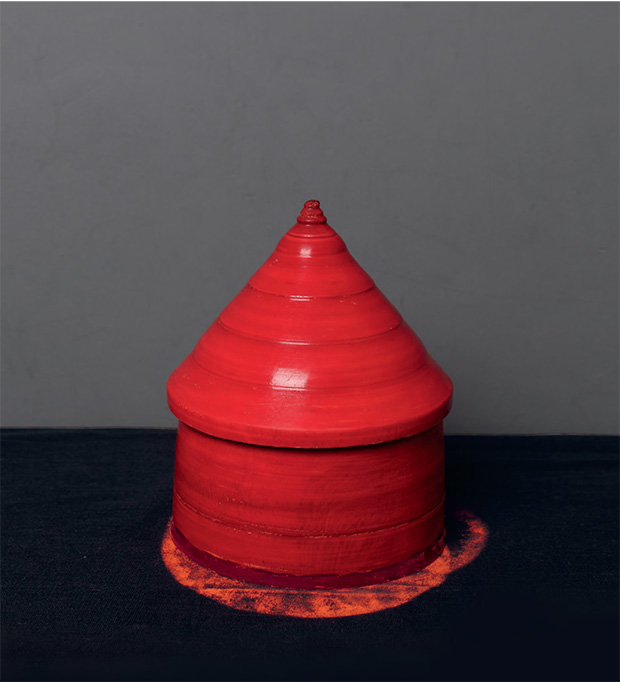
Sindoor Box The simple, evocative shape and rich, glossy red colour make this hand-lathed wooden sindoor box from Dumraon in Bihar graphic and striking. Like many small objects, its form is based on Hindu temples and spires, believed to transmit cosmic energies into physical spaces and objects. Sindoor, which is a reddish-orange vermilion powder, is applied by Hindu women to the middle parting on their foreheads to signify that they are married and are a fertile life force. The first time sindoor is applied is by a woman’s husband at their wedding ceremony and from then on it is applied daily until widowhood. A sindoor dibbi is a smaller, transportable version that a woman will make or buy herself, use for daily application and refill when empty. Made throughout India to this day, sindoor boxes come in a variety of shapes and sizes and can be plain red or feature carvings, inlays and appliqués. Marble and silver are also used in the making of these small containers.
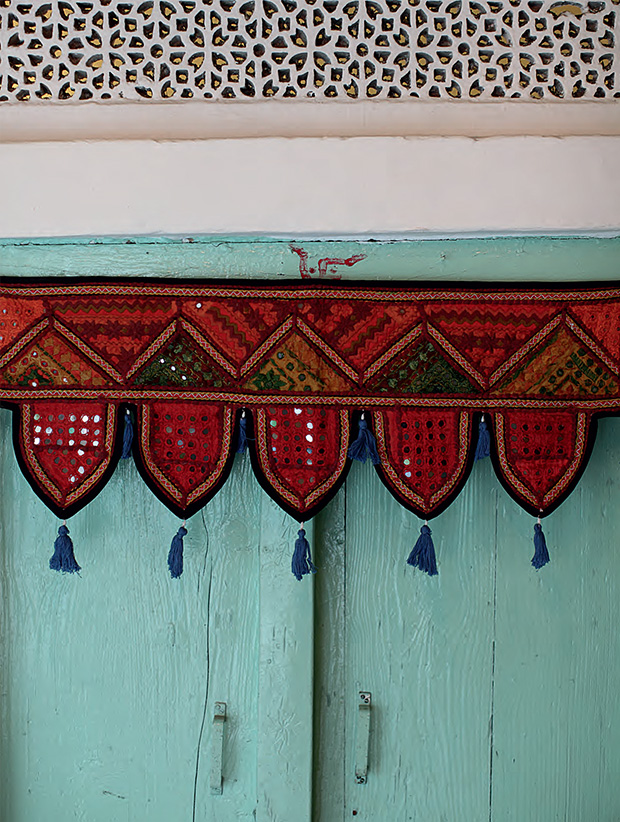
Toran In Hinduism, the entrance to a space should signify that something meaningful and special lies beyond and the toran (meaning archway or gate), which is hung in front of doorways, symbolizes this concept. In their most natural form, torans consist of sacred mango or ashoka (Saraca asoca) leaves strung on cotton threads. In arid regions where trees are scarce, such as western Gujarat and Rajasthan, brightly appliquéd fabrics, embroidery and tassels are used to replicate the leaves instead. Small mirrors attached to the toran are believed to ward off evil spirits by blinding them with their own reflections, as well as providing light and energy. A means of protection, they are strung at the top of front doors, particularly during religious and wedding ceremonies. The use of torans is detailed in the Vastu Shastra, which are ancient Indian texts on the science of architecture.
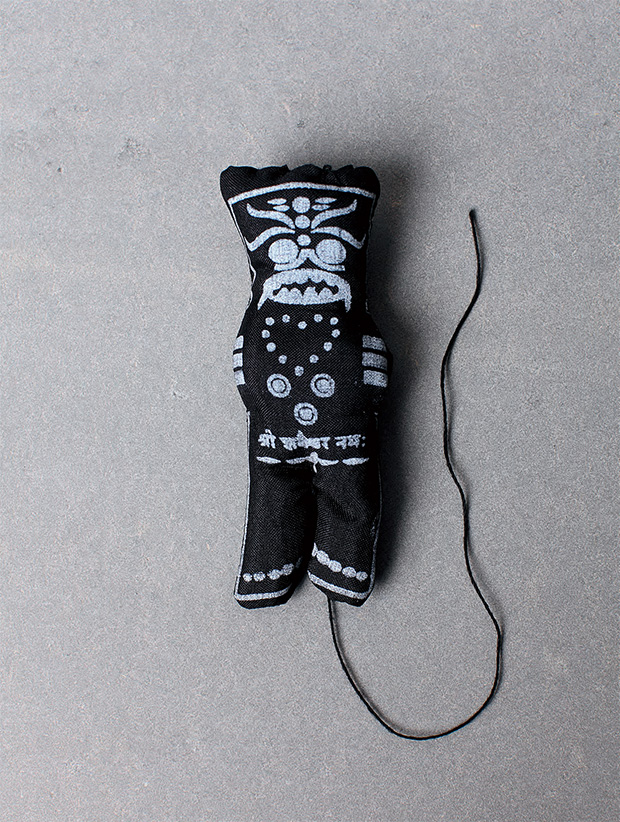
Bahuli The importance of protecting oneself and one’s home is evident in the number of items known collectively as nazar battu, which are intended to ward off an evil eye or bad intentions. While protection from nazar (evil eye) is a centuries-old tradition found throughout India, it is also found in Arab countries and Pakistan. The protection can take different forms: one way is to introduce a flaw to an item, such as a small error in a pattern; another is to hang a totka (a string of seven chillies and one lime) or bahuli (doll in Marathi) from an entrance, car, rickshaw or back of a lorry. The doll ranges from 6 cm to at least 17 cm (2 1/3 in to 62/3 in) in height and is typically made from black cotton, stuffed with cotton and decorated with white paint. Some also have colourful painted faces. The design incorporates a thread so that the bahuli can hang upside down from a doorway beam or the rear-view mirror of a car.
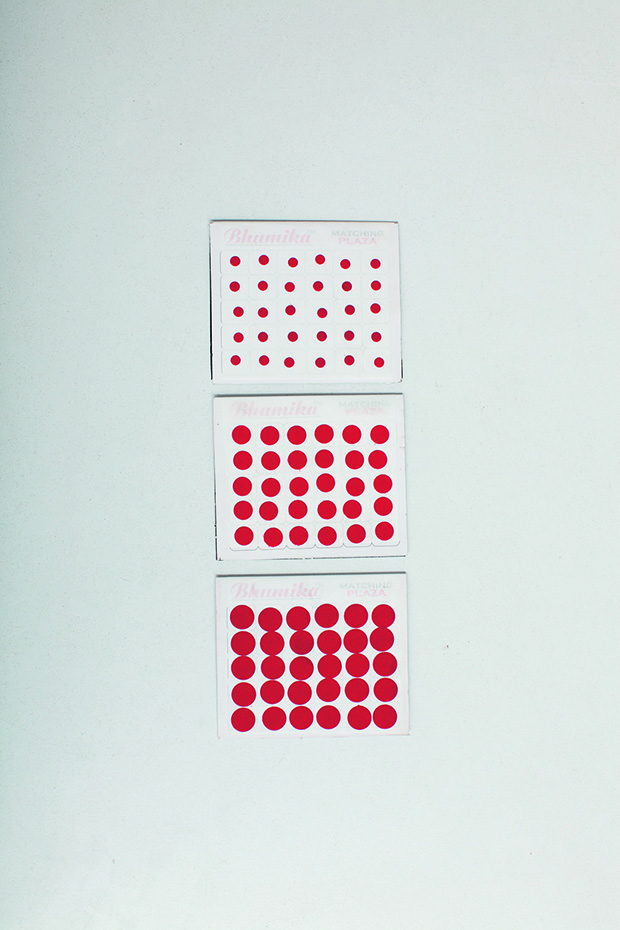
Bindi Stickers Look at a mirror in an Indian household and you are likely to notice one or more bindis stuck on the side to be reused. The bindi is a traditional, red, circular marking placed between the eyebrows, which symbolizes the sixth chakra (the third eye) and the marking of a married woman. Bindi stickers emerged during the 1960s as a quick and easy way to place a red mark on the forehead perfectly. The back is covered in adhesive while the front has a velvet-like texture created by flocking. Prior to the stickers, there was the tilak bindi which required a laborious process of taking a little disc, applying wax, then applying sindoor powder (zinc oxide and dye) or kumkum (red turmeric powder). Once the little disc was dipped in the bright-red powder, it was skilfully applied directly to the area between the eyebrows with the tip of the ring finger and the disc was then carefully removed leaving behind a perfect circle. Today, sticker bindis can be found with little jewels, in highly decorative forms or multicoloured, but it is the red or maroon bindi that is most common, as red signifies love and prosperity.
For more great design pictures and stories buy a copy of Sar: The Essence of Indian Design from the store now.